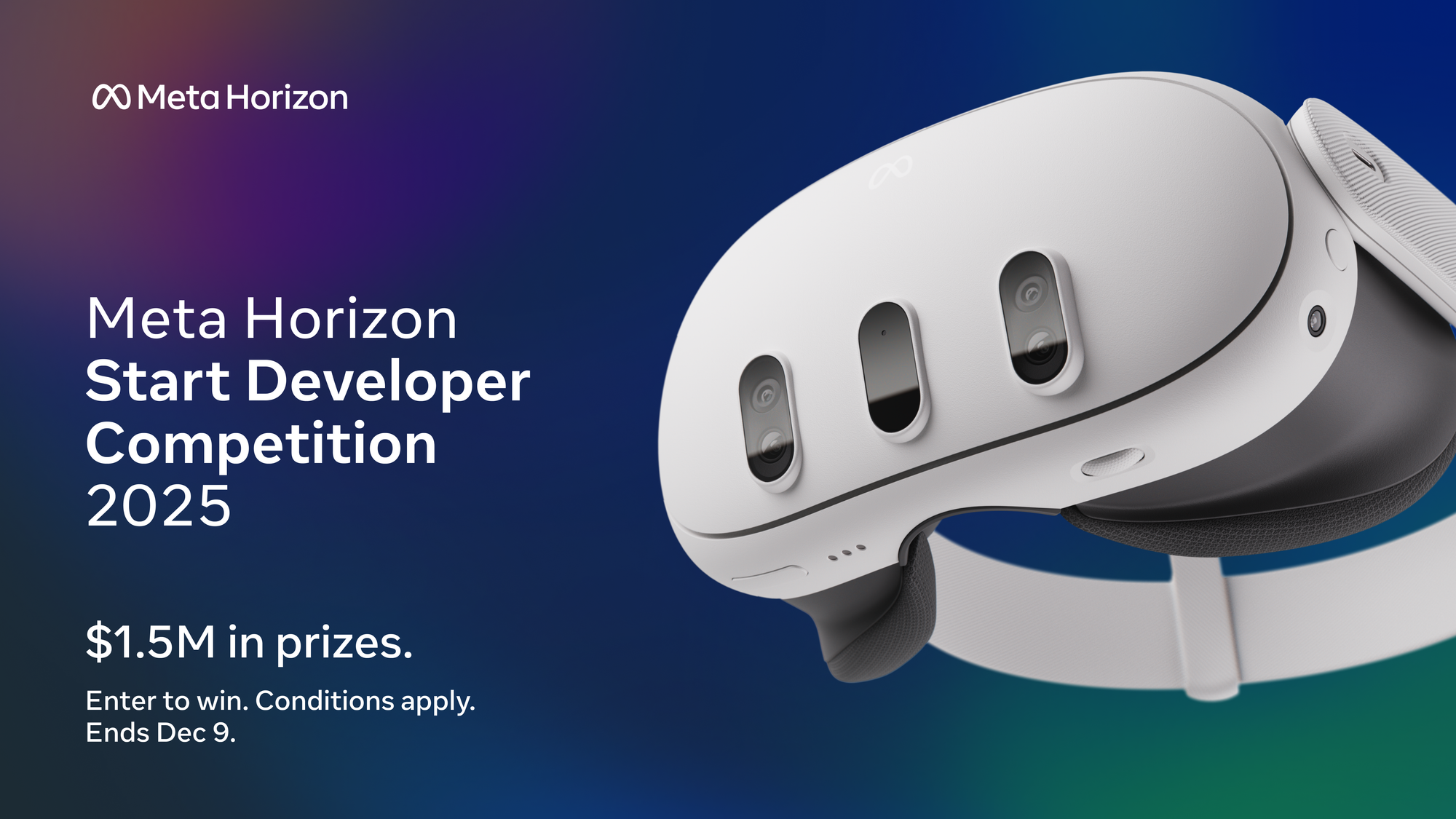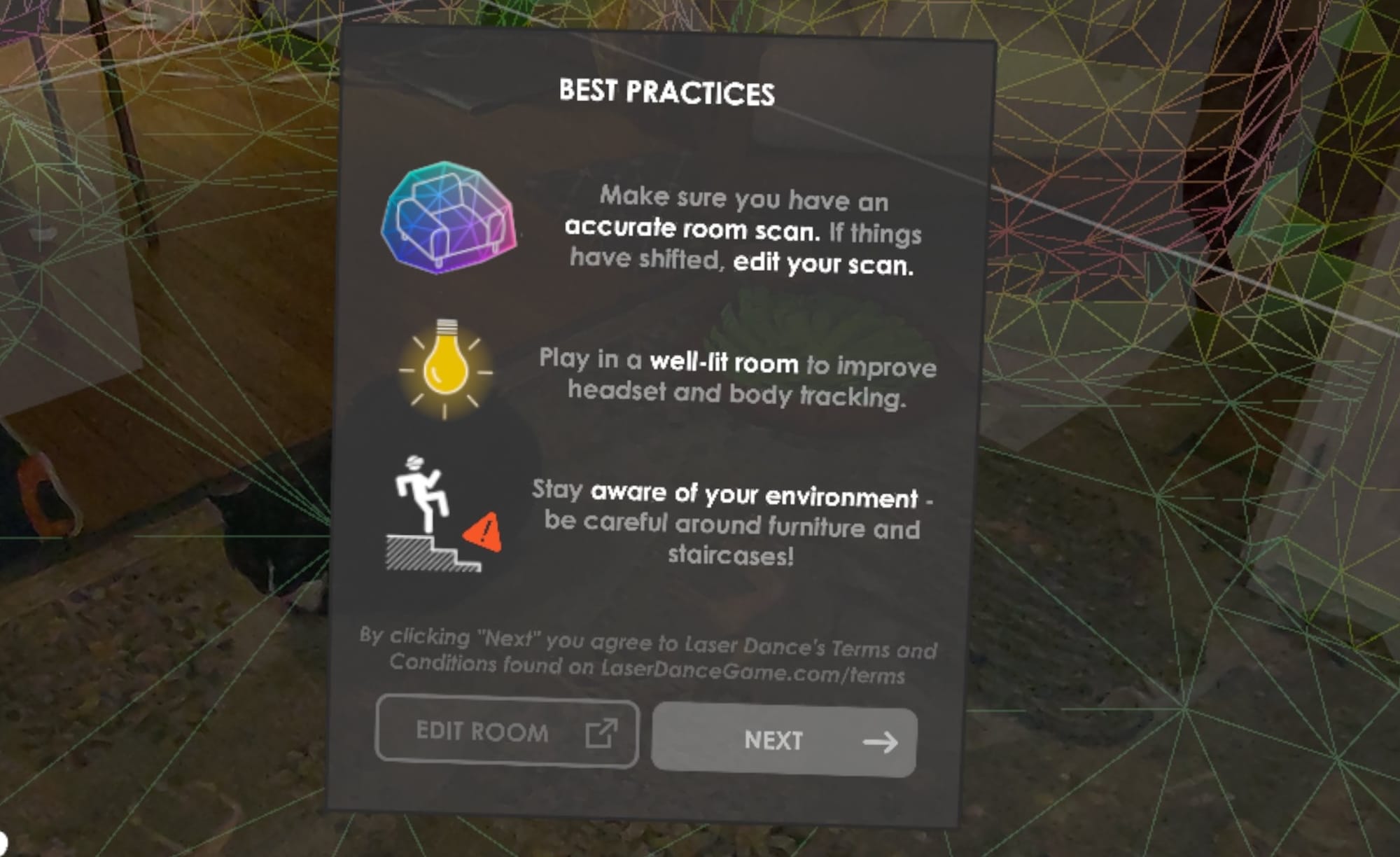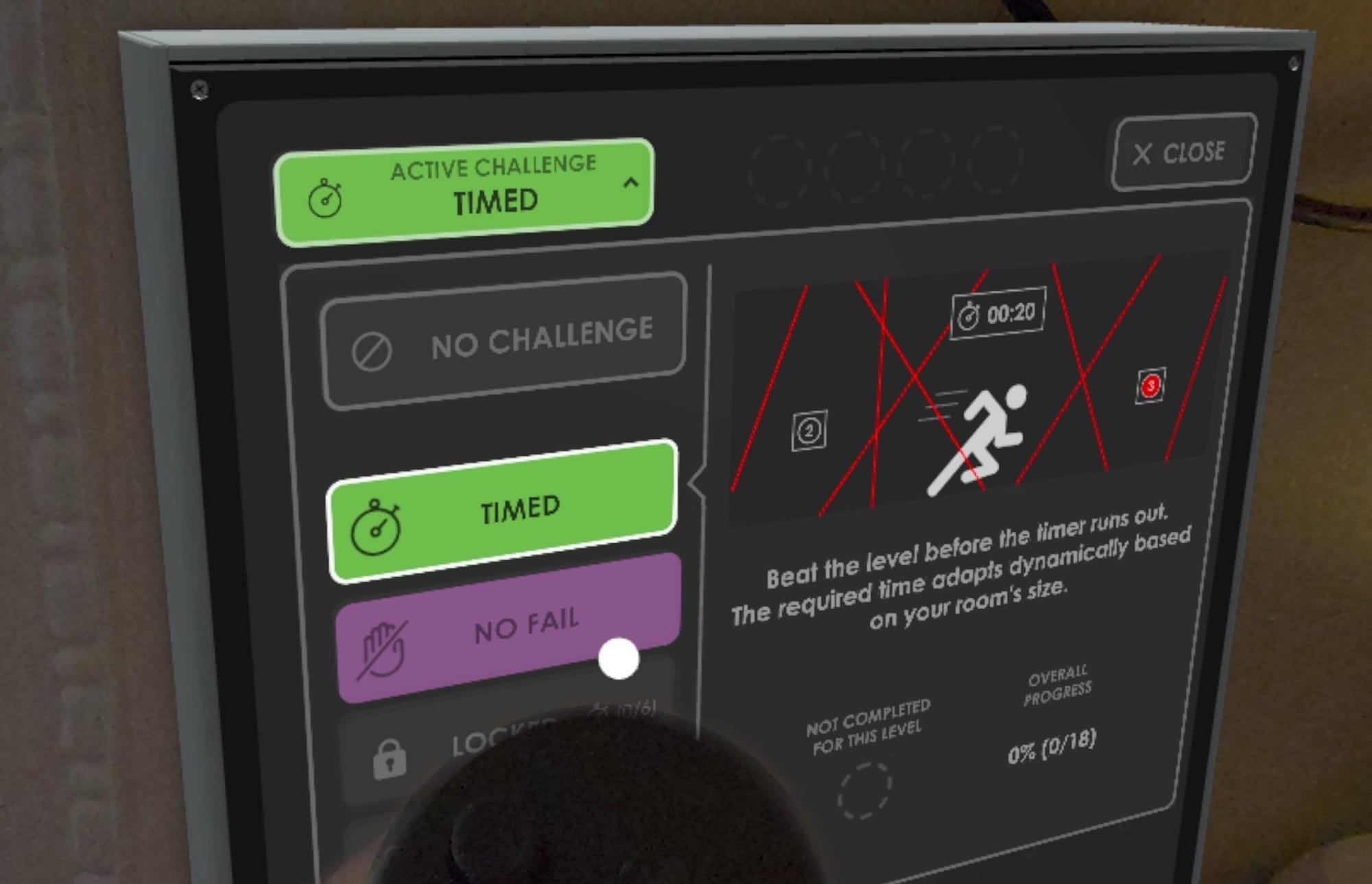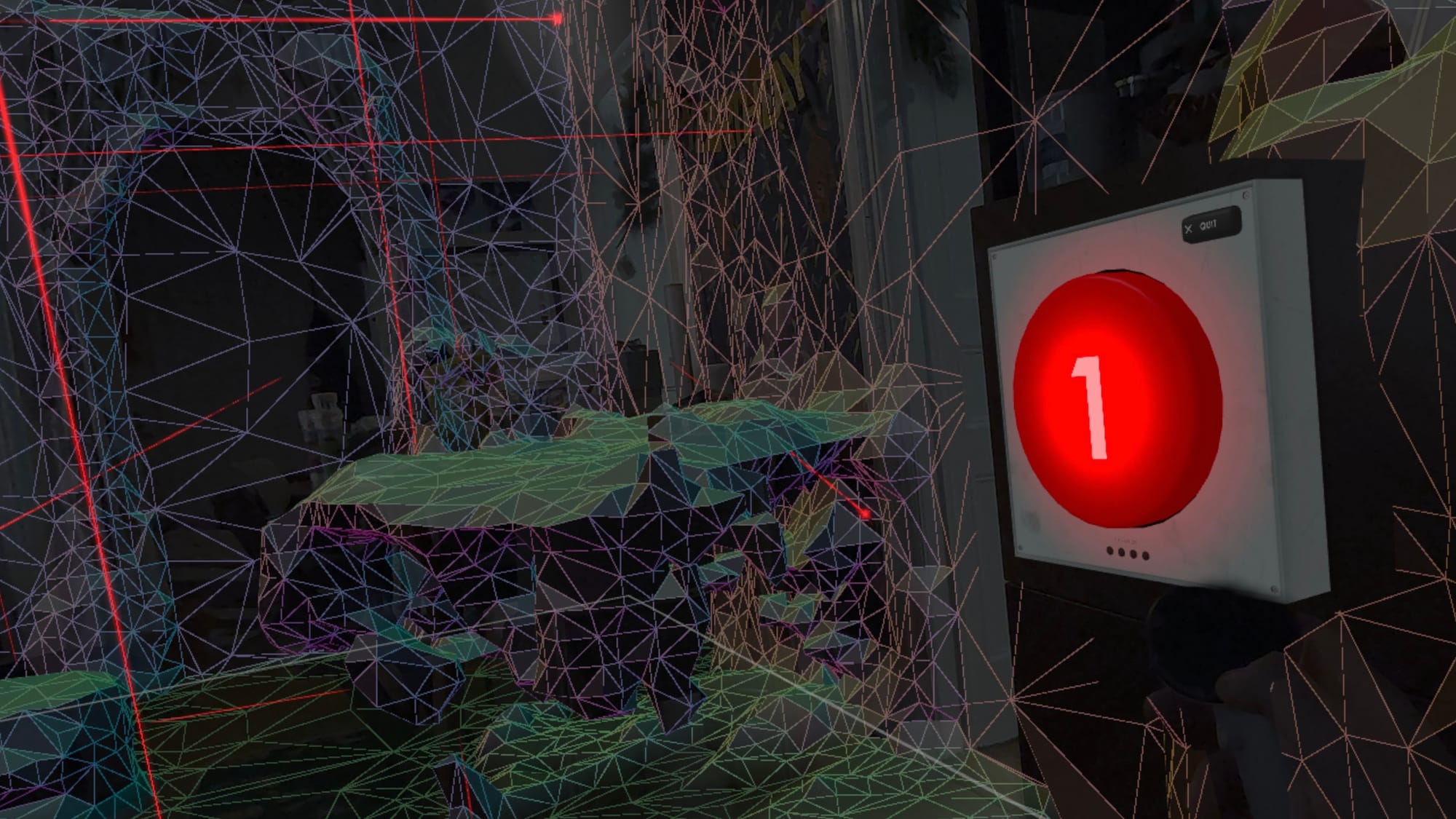Meta Ray-Ban Display Review: First Generation Heads-Up Mobile Computing
Meta Ray-Ban Display is an early glimpse of a future where mobile computing doesn't mean looking down and taking something out of your pocket.
Most people never leave home without their phone, and take it out of their pocket so often that it's become a replacement for fidgeting. The smartphone is so far the ultimate mobile computing device, an omnitool for communication, photography, navigation, gaming, and entertainment. It's also your alarm clock, calendar, music player, wallet, and flashlight. Globally, more people own a smartphone than TVs and cars combined. To get philosophical for a moment, the smartphone has become humanity's second cognitive organ.
The problem is that taking out your phone harshly disconnects you from the world around you. You have to crane your neck down and disengage from what you were otherwise doing, your attention consumed by the digital world of the little black rectangle.

In recent years, multiple startups have tried and failed to solve this problem. The smug founders of Humane came to liberate you from your phone with a $700 jacket pin, while Rabbit r1 promised the "large action model" on its $200 pocket device could handle your daily life instead.
The truth, and the reason why these companies failed, is that most people adore their phones, and are borderline addicted to the immense value they provide. And the screen of the smartphone is a feature, not a bug. People love being able to view content in high-resolution color anywhere they go, and despite the cries of a small minority of dissenters, the models with the biggest screens sell the best.
"If you come at the king, you best not miss", as the phrase goes.
The only form factor that seems to have any real chance of one day truly replacing the smartphone is AR glasses, which could eventually provide even larger screens that effectively float in midair, anywhere the wearer wants, any time they want. But while prototypes exist, no one yet knows how to affordably produce true AR glasses in a form factor that you'd want to wear all day. In the meantime, we're getting HUD glasses instead.
HUD glasses can't place virtual 3D objects into the real world, nor even 2D virtual interfaces. Instead, they provide a small display fixed somewhere in your vision. And in the case of many of the first-generation products, like Meta Ray-Ban Display, that display is only visible to one of your eyes.
Meta Ray-Ban Display is also highly reliant on your nearby phone for connectivity, so it isn't intended to be a replacement for it as a device. It is, however, meant to replace some of the usage of your phone, preventing the need to take it out of your pocket and keeping your head pointed up with your hands mostly free. So does it succeed? And is it a valuable addition to your life? I've been wearing it daily for around a month now to find out.
(UploadVR purchased Meta Ray-Ban Display at retail with our own funds, while Meta provided us with the correctly sized Meta Neural Band for review.)
Comfort & Form Factor
Unlike a VR headset that you might use at home or on a plane for a few hours, the pitch for smart glasses is that you can wear them all day, throughout your daily life. Even when they run out of battery, they can still act as your sunglasses or even prescription eyewear.
 UploadVRDavid Heaney
UploadVRDavid Heaney
As such, it's crucial that they have a design you'd be okay with wearing in public, and that they're comfortable enough to not hate having them on your face.
Meta Ray-Ban Display weighs 69 grams, compared to the 52 grams of the regular Ray-Ban Meta glasses, and 45 grams of the non-smart Ray-Ban equivalent. It's also noticeably bulkier, with thicker rims and far thicker temples.




In my month with Meta Ray-Ban Display I've worn it almost every day throughout my daily life, sometimes for more than 8 hours at a time, and I experienced no real discomfort. The additional weight seems to be mostly in the temples, not the rims, while the nose pads are large and made out of a soft material. If anything, because the larger temples distribute the weight over a greater area and are more flexible, I think I even find Meta Ray-Ban Display slightly more comfortable than the regular Ray-Ban Meta glasses.
So, for my head at least, physical comfort is not an issue with Meta Ray-Ban Display. But what has been an issue is the social acceptability of its thick design.
With the regular Ray-Ban Meta glasses, people unfamiliar with them almost never clocked that I was wearing smart glasses. The temples are slightly thicker than usual, but the rims are essentially the same. It's only the camera that gave them away. With Meta Ray-Ban Display, it's apparent that I'm not wearing regular glasses. It's chunky, and everyone notices.
In some circles, thick-framed glasses are a bold but valid fashion choice. For most people, they look comically out of place. I've asked friends, loved ones, and acquaintances for their brutally honest opinions. Some compared it to looking like the glasses drawn on an archetypal "nerd" in an old cartoon, while only a few said that the look works because it matches current fashion trends. And my unit is the smaller of the two available sizes.

Meta Ray-Ban Display also comes in two colors, 'Black' and 'Sand', and a confounding factor here is the black is glossy, not matte. I'm told that this decision was made because glossy was the most popular color for the regular Ray-Ban Meta glasses. But combined with the size, the glossy finish on Meta Ray-Ban Display makes it look cheap in a way that an $800 product really shouldn't, like a prop for a throwaway Halloween costume.
So Meta Ray-Ban Display is physically very comfortable, but not socially. More on that soon.
The Monocular Display
The fixed HUD in Meta Ray-Ban Display covers around 14 degrees of your vision horizontally and vertically (20 degrees diagonal). To understand roughly how wide that is, extend your right arm fully straight and then turn just your hand 90 degrees inward, keeping the rest of your arm straight. To understand how tall, do the same but turn your hand upwards or downwards.
What you see within that 20 degrees is a clear and high detail image, though ever so slightly soft rather than fully sharp, with higher angular resolution than even Apple Vision Pro. There's a slight glare that sees, for example, icons mildly bleed into the empty space around them, but this is very minor, and not distracting.
More notably, the significant difference between a waveguide like this and the interfaces you might see in a mixed reality VR headset is that it's very translucent, with a ghostly feel. You can see the real world through it at all times.
Display System Specs
- Display Type: Full-Color LCOS + Geometric Reflective Waveguide (Monocular)
- Resolution: 600×600
- Angular Resolution: 42 pixels per degree
- Field Of View: 14°H × 14°V (20° D)
- Peak Brightness: 5000 nits (automatically adjusts)
- Frontal Light Leak: 2%
The display's perceived opacity and brightness is highly variable, though, because with waveguides this depends on the environmental light level, and the system also rapidly automatically adjusts display brightness, leveraging the ambient light sensor. You can manually adjust the brightness if you want, but the system is very good at deciding the appropriate level at all times, so I never do.
With a 5000 nit maximum, it's even visible in daytime sunlight, though it has a very ghostly translucent feel. As the photochromic lenses transition to dark, the perceived opacity slightly increases.
One notable quirk is that because an LCOS is essentially (to greatly simplify things) an LCD microdisplay, if you're in a very dark environment you'll see a faint glow throughout the display area when it's on, like an LCD monitor trying to show black. But in anything above almost pitch black, you won't see this.
So Meta Ray-Ban Display's display is surprisingly good, and lacks the distracting visual artifacts seen in many of the waveguide AR headsets of the 2010s. But there is a massive, glaring problem: it's only visible to your right eye.
No through-the-lens approach accurately depicts what the HUD looks like, so here's Meta's generic depiction instead.
Meta Ray-Ban Display is a monocular device. Your left eye sees nothing at all.
Other than your nose, which your visual system is hardwired to understand, there is no analog in nature for one eye seeing something the other doesn't. It just feels wrong, and induces a constant minor feeling of eyestrain when I look at the display for more than a few seconds.
I can put up with it for a few seconds at a time, and have gotten slightly more used to it over time, but I would never want to watch a video or conduct a video call like this. I've also put the glasses on more than a dozen people now, and while some of them could just about tolerate the monocular display, others found it hurt their eyes within seconds.
I suspect that this is a core reason why Meta Ray-Ban Display is only available to buy after a retail demo. This just isn't a visually comfortable product for many people, and Meta likely wants to avoid mass returns.
Bloomberg's Mark Gurman and supply-chain analyst Ming-Chi Kuo have both claimed that Meta plans to retire Meta Ray-Ban Display in 2027 upon launching a binocular successor, with significantly ramped up marketing, production, and availability. By closing my left eye, I can already get a pretty good feel for just how much more visually comfortable the next generation could be.
No Light Leak! But Is That A Good Thing?
Almost all of the brightness of Meta Ray-Ban Display stays on your side of the glasses – 98% according to Meta. The display is not visible to people looking at you. I've repeatedly asked friends whether they can even tell if I have the display on or off, and none have been able to so far. The clickbait YouTube thumbnails you may have seen are fake.
This is partially due to the low "light leak" of the geometric waveguide in Meta Ray-Ban Display, but it's also because of the automatic brightness adjustment. If you manually turn up the brightness to an uncomfortably high level, which I can't imagine anyone intentionally doing, you can make the display slightly visible externally, though not its content (it just looks like a scrambled pattern). But again, even this requires an adjustment that no regular user would reasonably make.
All this said, while I initially assumed that the low light leak was an important feature of Meta Ray-Ban Display, I've come to see the inability for nearby people to know whether you're looking at the HUD as somewhat of a bug.
When you're with another person and take out your phone, that's an unambiguous indicator that you're diverting attention from them. Similarly, while Apple Vision Pro shows a rendered view of your eyes, if virtual content is occluding the person you're looking at, Apple intentionally renders an occluding pattern. Why? To clearly signal that you're looking at virtual content, letting the person know when they do or don't have your full attention.
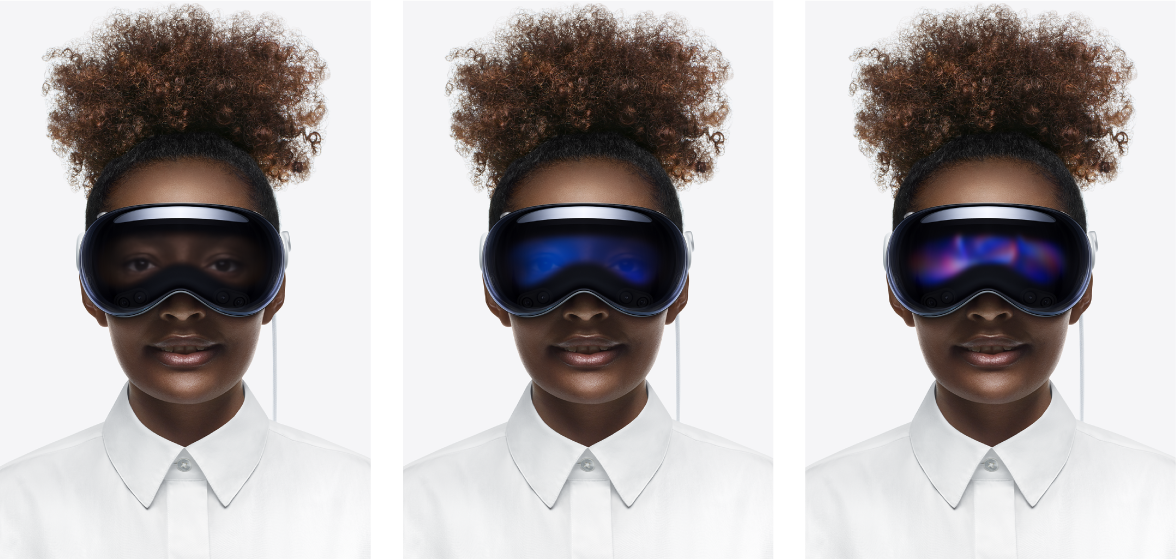
With Meta Ray-Ban Display, there is no such signal. People who spend a lot of time with you can eventually figure out that you're looking at the HUD when your eyes are looking slightly down and to the right, but it's far more ambiguous, and this is not conducive to social acceptability. Are you fully present with them or are you not? They can't clearly tell.
And the worst case scenario is, when looking at the HUD, to a person sitting in front of you it can, in some specific circumstances, appear as if you're just looking at their chest. Yikes.
I'm not saying that I want other people to be able to see the content of my display, as that would be a terrible privacy flaw. But I do wish there was an external glow on the lens when the display is on. I don't want the other person to have to guess whether I'm fully present or not, and whether I'm looking at the HUD or their body.
The Interface & Meta Neural Band
Like the regular Ray-Ban Meta glasses, you can control Meta Ray-Ban Display with Meta AI by using your voice, or use the button and touchpad on the side for basic controls like capturing images or videos and playing or pausing music. But unlike any other smart glasses to date, it also comes with an sEMG wristband in the box, Meta Neural Band.
In its current form, Meta Neural Band is set up to detect five gestures:
- Thumb to middle finger pinch: double tap to toggle the display on/off, single tap to go back to the system menu, or hold for quick shortcuts to the 3 menu tabs.
- Thumb to index finger pinch: how you "click".
- Thumb to side of index finger double tap: invoke Meta AI.
- Thumb swiping against the side of your index finger, like a virtual d-pad, which is how you scroll.
- Thumb to index finger pinch & twist: to adjust volume or camera zoom, as you would a physical volume knob.
How Does Meta Neural Band Work?
Meta Neural Band works by sensing the activation of the muscles in your wrist which drive your finger movements, a technique called surface electromyography (sEMG).
sEMG enables precise finger tracking with very little power draw, and without the need to be in view of a camera.
The wristband has an IPX7 water resistance rating, and charges with an included proprietary magnetic contact pin charger.
While in the above clips I have my arms extended to illustrate the gestures, the beauty of sEMG is that you don't need to. Your hand can be at your side, resting on your leg, or even in your pocket. And it works even in complete darkness.
The gesture recognition is almost flawless, with close to 100% accuracy. The one exception is that rarely, if I'm walking it will fail to pick up a sideways directional swipe. But in general Meta Neural Band works incredibly well. The volume adjustment gesture, for example, where you pinch and twist an imaginary knob, feels like magic.
Wake (top left), Scroll (top right), Click (bottom left), and Volume/Zoom (bottom right)
The Meta Neural Band gestures control the HUD interface, which looks much like that of a smart watch. It has 3 tabs, which you horizontally scroll between:
- The center home tab (the default) shows the date and time, your notifications, and a Meta AI button, with tiny shortcuts to active audio or navigation at the top.
- The right tab is the two-column app library: WhatsApp, Instagram, Messenger, Messages, Calls, Camera, Music, Photos, Captions, Maps, Tutorials, and a game called Hypertrail. Four rows are shown at a time, and you navigate vertically to see the rest.
- The left tab features quick controls and settings like volume, brightness, Do Not Disturb, as well as shortcuts to Captions, Camera, and Music.
When I first used Meta Ray-Ban Display I found the interface to be "just too much", often requiring too many sequential gestures to do what you want. While I still broadly hold this view a month later, I have found myself becoming more used to quickly performing the correct sequence with experience, and I've discovered that if you pinch and hold your thumb to your middle finger, you get shortcuts to the three main menu tabs, which can speed things up.
I still think there's plenty of room for improvement in Meta Ray-Ban Display's interface though, from a simplicity perspective, and repeat my assertion that the menu should have two tabs, not three. The Meta AI finger gesture makes the Meta AI button on the center tab redundant, for example, and when you don't have any notifications, the tab feels like a waste of space.
This clip from Meta shows the 3 tabs of the system interface, and how you swipe between them.
A lot of the friction here will eventually be solved with the integration of eye tracking. Instead of needing to swipe around menus, you'll be able to just look at what you want and pinch, akin to the advantages of a touchscreen over arrow keys on a phone. But for now, it can sometimes feel like using MP3 players before the iPod, or smartphones before the iPhone. sEMG is obviously going to be a huge part of the future of computing. But I strongly suspect it will only be one half of the interaction answer, with eye tracking making the whole.
A major improvement since the Meta Connect demo though, is performance. While I still wouldn't describe Meta Ray-Ban Display as very snappy, the abject interface lag I encountered at Connect is gone in the shipping consumer model. The most noticeable delay is in waking the display, which often takes a second or two after the gesture.
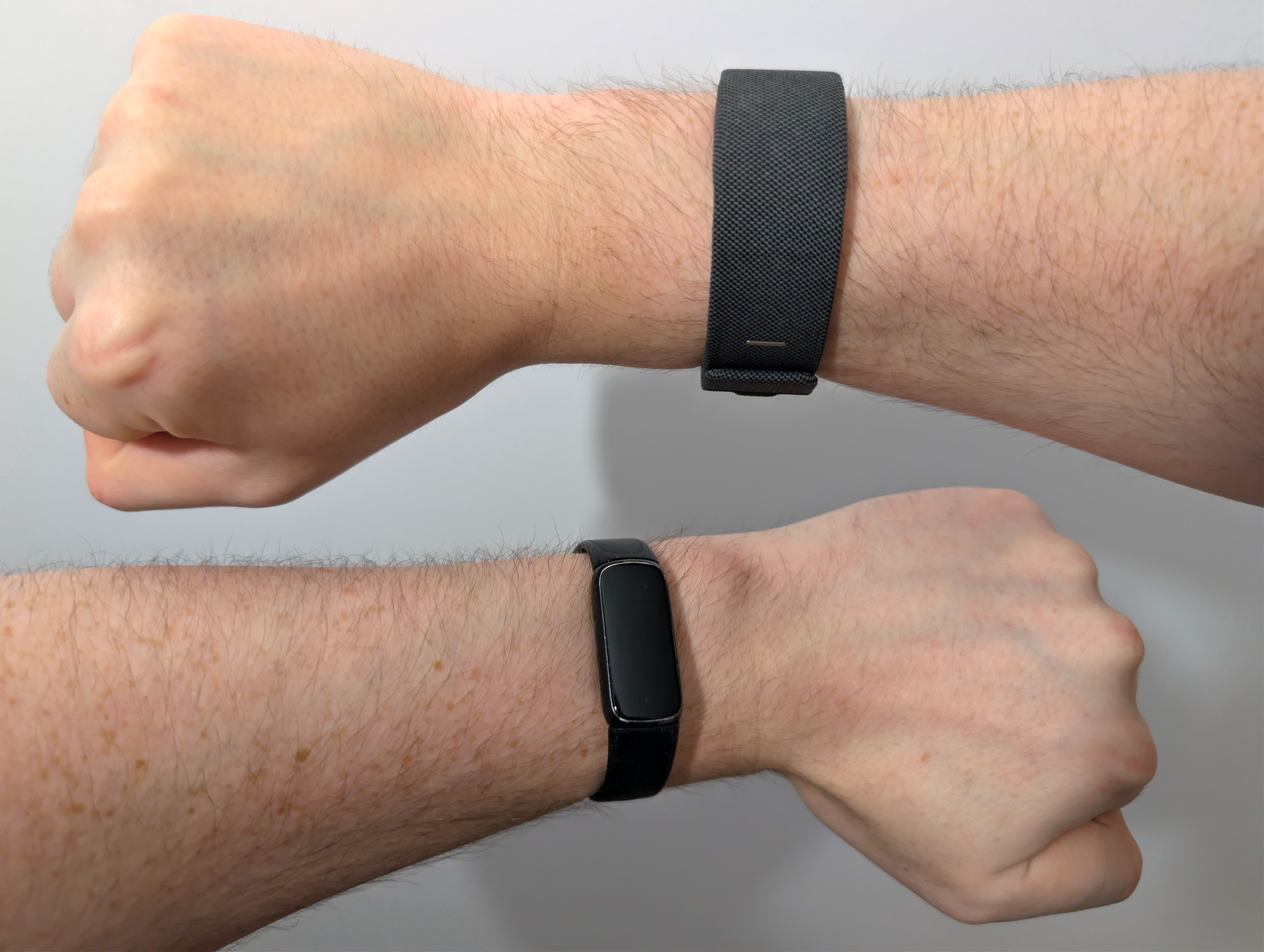
Coming back to Meta Neural Band for a second, the only real problem with it is that it's something else you need to wear and charge (with a proprietary cable). I always wear a Fitbit on my left wrist, and now I wear the Meta Neural Band on my right too.
That's not to say that Meta Neural Band is a comfort burden. I find it no more or less comfortable than I did the Pixel Watch I used to own, and having tried a Whoop it feels similar to that too. And while it does leave a minor mark on my wrist, so do the straps of those other devices.
But it's another thing to remember to put on charge at night, another proprietary cable to remember to bring when traveling, and another USB-C port needed at my bedside.
Ideally, I should only have to wear and charge one wrist device. But today, Meta Neural Band is solely an sEMG input device, and nothing more.

The band already has an accelerometer inside, so in theory, a software update could let it track my daily step count. And if a future version could add a heart rate sensor for fitness, health, and sleep tracking, I wouldn't need my Fitbit at all. But we're not there yet. And wearing a second wrist device just for input is a big ask for any product.
Features & Use Cases
There are six primary use cases of Meta Ray-Ban Display. It's a camera, a communications device, an on-foot GPS navigator, an assistive captions and translations tool, a personal audio player, and an AI assistant that can (if you want) see what you see.
So how well does it do each of these things?
Capturing Photos & Videos
When the regular Ray-Ban Meta glasses first launched, they were primarily pitched as camera glasses, like their predecessor the Ray-Ban Stories, and this remains one of the biggest use cases even as Meta now calls the product category "AI glasses". But without a display, you didn't get a preview of what you're capturing, nor could you check if the result was any good until it synced to the phone app. Sometimes you got lucky, and other times you failed to even frame your subjects, an issue not helped by the camera on almost all smart glasses being on a temple rather than centered.
Meta depiction of photography.
Meta Ray-Ban Display also has 32GB of storage for media, and also syncs everything to your phone via Wi-Fi 6 when you open the Meta AI app. But the experience of capturing media is fundamentally better, because you get a live visual preview of exactly what's in frame. And with the Meta Neural Band, you can capture without raising your arm, as well as adjust the zoom on the fly by pinching your index finger to your thumb and twisting, the same gesture used to adjust the volume.
The camera quality isn't as good as your phone, given that the sensor has to fit into the temple of glasses. It appears to be the same camera as the regular Ray-Ban Meta glasses, and while it can produce great results in daytime, in low-light environments or with heavy zoom you'll get a relatively grainy output. You can see some sample shots and clips in my colleague Ian Hamilton's launch-week impressions piece.
 UploadVRIan Hamilton
UploadVRIan Hamilton
Regardless, the ability to capture precisely framed shots without needing to hold up a smartphone is Meta Ray-Ban Display at its best. It lets you both stay in the moment and capture memories at the same time, without the doubt that what you've shot doesn't capture what you wanted to include. And it works completely standalone, even if your phone is out of battery.
With a couple of swipes and taps you can also easily send your captured media to a friend, something that required extensive voice commands with the displayless glasses. And this brings us on to messaging.
Messaging
While Meta doesn't have an existing device ecosystem like Apple and Google, what it does have is the most popular messaging platform and two most popular social networks in the world, all three of which have an integration on Meta Ray-Ban Display.
You can opt to have incoming WhatsApp, Messenger, Instagram, and text messages pop up on the display, and so without needing to look down at a smartwatch or take your phone out of your pocket you can "screen" them to decide which are important enough to respond to immediately. Tap your thumb to your middle finger to dismiss a message, or to your index finger to open it.
The notification appears in the very bottom of the display area, which is already slightly below your sightline, so doesn't block your view of what's in front of you. And of course, unlike with a phone, no one around you can see it. There's also a setting to automatically detect when you're in a moving vehicle, so if you start driving a car you won't be interrupted.
Meta depiction of messaging.
If you want to respond to a message, there are 4 options in the interface: dictate, voice note, suggested emoji, or suggested reply.
I don't send voice notes, and I don't find the suggested emojis or replies useful, but I do love the dictation. It's powered by an on-device speech recognition model with relatively low latency and surprisingly great accuracy, in my experience. Even with my Northern Irish accent that some other systems (and people) can find difficult to understand, I'm able to dictate full responses without needing to type. And what's most impressive is that it works even when you speak quietly, thanks to the six-microphone array that includes a dedicated contact mic positioned just a few inches above your lips. That's yet another advantage of the glasses form factor.
Still, there are plenty of messages that I wouldn't want to dictate even softly in public, and situations when I want to use combinations of punctuation and letters that don't have a spoken form. Meta plans to release a software update in December that will let you enter text by finger-trace letters on a physical surface, such as your leg, bringing some of its more advanced sEMG research out of the lab and into the product. It sounds straight out of science fiction, and we'll bring you impressions of it when the update rolls out. But it's not there today.
What About iMessage?
If you're an iPhone user, you're probably wondering whether all this works with iMessage.
I use an Android phone, from which Meta Ray-Ban Display can receive and send both 1-on-1 and group text messages, including both SMS and RCS.
For iPhone, I'm told, you can receive and send only 1-on-1 iMessages, with no support for group threads. And this support is limited to only pop-up notifications - you won't see a 'Messages' app in the list.
These limitations, to be clear, are imposed by Apple, and Meta would gladly support the missing features if Apple let it.
As well as receiving new messages as pop-up notifications, you can also access your 10 most recent threads on each messaging platform at any time by swiping to it on the apps list. In the apps, you can scroll through past messages and send new ones, including your captured photos and videos stored on the glasses.
The problem with accessing your past message threads, and with viewing photos and videos you've been sent, is that it's incredibly slow to load. Open WhatsApp on your phone and you'll typically see your messages update within a fraction of a second. On Meta Ray-Ban Display you'll see everything as it was the last time the applet was opened for upwards of 10 seconds, while media can take over a minute at times, or even just seemingly never load. And it's badly missing a loading progress bar.
So, for example, while in theory you can definitely use Meta Ray-Ban Display to catch up on the dozens of Reels that one unemployed friend sends you all day, assuming your eyes can put up with the monocular display for this long, in practice, as with waiting for fast-moving group chats to finally load, I often found it faster to take the phone out of my pocket and open the real app.
The cause of this slowness seems to be that Meta Ray-Ban Display is entirely reliant on your phone's Bluetooth for internet connectivity. This connection speed issue is something I ran into repeatedly on Meta Ray-Ban Display, and made me wish it had its own cellular connection. In fact, I'm increasingly convinced that cellular will be a hard requirement for successful HUD and AR glasses.
Audio & Video Calls
For over two years now, I've made and taken almost every phone call, both personal and professional, on smart glasses. I hate in-ear and over-ear audio devices for calls because it feels unnatural to not hear my own voice clearly, and the people on the other end love the output of the optimally-positioned microphone array.
With Meta Ray-Ban Display, the addition of the HUD and wristband lets you see how long a call has gone on for, and end it without having to raise your hand. You can also view and call recently called numbers in the Calls applet.

On the regular Ray-Ban Meta glasses you can also share your first-person view in a video call, and the big new calling feature of Meta Ray-Ban Display is that you can also see the other person.
But again, this great-in-theory video calling feature is ruined by the fact that the internet connection is routed to Meta Ray-Ban Display via your phone's Bluetooth. Even with my phone and the person I'm calling on very strong internet connections, the view on both sides was laggy and pixelated. Bluetooth just isn't meant for this.
On-Foot Navigation
One of the features I've most wanted HUD glasses (and eventually AR glasses) for is pedestrian navigation. There are few things I hate more in this world than arriving in a new city and having to constantly look down at my phone or watch while walking, almost bumping into people and poles. Worse, in cities with dense skyscrapers, the GPS accuracy degrades to dozens of meters, and I hopelessly watch the little blue dot on my phone bounce around the neighborhood.
In theory, Meta Ray-Ban Display solves at least the first problem, but with a massive caveat you absolutely must be aware of if you're thinking of buying it for this use case.
Meta depiction of navigation.
You can open the Maps applet anywhere, and you'll see a minimap (powered by OpenStreetMap and Overture) with nearby venues and landmarks. You can zoom all the way in to the street level, or out to the city level, using the same pinch-and-twist gesture used for volume control. You can also search for places using speech recognition, and scroll through the results by swiping your fingers.
The problem is that everywhere except inside the 28 cities Meta explicitly supports, you won't be able to initiate navigation. Instead, you just have an option to send it to your phone, where you can tap to open it in Google Maps, defeating the purpose. It's a rare product where core functionality is geofenced to a handful of cities.
I have been able to use Meta's navigation feature multiple times when visiting London, and found it genuinely very useful when in New York for the Samsung Galaxy XR launch event. I love the idea here, and where it works, the implementation isn't bad. Not having to look down to navigate is exactly what I wanted. But it works in so few places, relative to my life at least, that I just can't stop wishing it had Google Maps. And it's hard to imagine not switching to whatever HUD glasses have Google Maps first.
The Supported Cities
USA
• Atlanta, Georgia
• Austin, Texas
• Boston, Massachusetts
• Chicago, Illinois
• Dallas, Texas
• Fort Worth, Texas
• Houston, Texas
• Los Angeles, California
• Miami, Florida
• New York City, New York
• Orlando, Florida
• Philadelphia, Pennsylvania
• Phoenix, Arizona
• San Antonio, Texas
• San Diego, California
• San Francisco, California
• San Jose, California
• Seattle, Washington
• Washington D.C.Canada
• Toronto, Canada
• Montreal, Canada
• Vancouver, Canada
UK
• London, UK
• Manchester, UK
France
• Paris, France
Italy
• Rome, Italy
• Milan, Italy
• Naples, Italy
It's baffling that Meta decided to roll its own navigation system. It may be the right bet in the long term, but in the short term it compromises the product and leaves the goal wide open for Google to deliver a significantly better experience. Meta already has a wide-ranging partnership with Microsoft – why didn't it license Bing Maps for navigation? Or why not acquire a provider like TomTom?
It somewhat reminds me of the Apple Maps launch debacle, except in a parallel universe where it arrived alongside an iPhone that didn't have Google Maps.
Meta AI & Its Dedicated Gesture
Meta has been marketing its smart glasses as "AI glasses" for some time now, riding the wave of hype that has for better and for worse almost entirely taken over the tech industry in recent years.
I didn't use Meta AI often on the regular Ray-Ban Meta glasses because I hate saying "Hey Meta", just as I hate saying "Hey Google", especially in public. With Meta Ray-Ban Display, you can still invoke the AI that way if you want, but there's also a dedicated gesture: just slightly curl your fingers inward and double-tap the side of your index finger with your thumb.
There's something very satisfying about it. It feels more natural than the pinch gestures used for everything else. And it has me using Meta AI far more often than I would if I had to keep saying "Hey Meta".
With the display, you also get visual aids in your responses. Ask about the weather in a place, for example, and you'll see a five-day forecast appear. Or for most queries, you'll see the response appear as text. I wish I could disable the voice response and just get the text, for some situations, and while I can do so by just reducing the volume to zero temporarily, this isn't a very elegant solution.
The real problem with Meta AI is that it's still Meta AI. It just isn't as advanced as OpenAI's GPT-5 or Google's Gemini 2.5, sometimes failing at queries where it needs to make a cognitive leap based on context, and fundamentally lacking the ability to think before it responds for complex requests.
Occasionally, I've run into situations where I wanted the convenience of asking advanced AI about something without taking out my phone, but ended up doing so after Meta AI just couldn't get the answer right. Ideally, I'd be able to say "Hey Meta, ask [ChatGPT/Gemini]". But that's not supported.
Audio Playback & Control
The primary way I use the regular Ray-Ban Meta glasses is for listening to podcasts and audiobooks. Smart glasses speakers don't do music justice, but they're great for spoken word content, and having your ears fully open to the real world is ideal.
What's different on Meta Ray-Ban Display is that you can far more easily and precisely adjust the volume. Rather than needing to raise your arm up to your head and awkwardly swipe your finger along the temple, you can just wake the display, pinch and hold your index finger to your thumb, and twist. It's a satisfying gesture that feels natural and precise.
The HUD also shows you a thumbnail for the content you're viewing, as well as how far you're into it and how long is left. It's a nice addition, and one less reason to take out my phone.
Live Captions & Translation
For accessibility, one of the biggest marketed features of Meta Ray-Ban Display is Live Captions.
The real-time speech transcription has decent accuracy, with the exception of niche proper nouns, and fairly low latency, always giving you at least the gist of what the person you're looking at is saying. And yes, I do just mean the person you're looking at. It's remarkable how well the system ignores any audio not in front of you, leveraging the microphone array to cancel it out. Look away from someone and the captions will stop. Look back and they'll continue. It really does work.
Meta depiction of live captions.
Just one swipe over from the virtual button to start Live Captions is the one to start Live Translation, and this feature blew me away. Having a friend speak Spanish and seeing an English translation of what they're saying feels like magic, and I could see it being immensely useful when traveling abroad. For the other person to understand you, by the way, you just hand them your phone with the Meta AI app open it shows them what you're saying, in their language. Brilliant.
Yes, you can do live translation with just a phone, or audio-only devices like AirPods and Pixel Buds.
Unfortunately, it only supports English, French, Spanish, and Italian. This is another example of where Google's services, namely Google Translate, would be immensely valuable.
The bigger problem with both Live Captions and Live Translation is that because the display is slightly below and to the right of your sightline, you can't look directly at someone when using the features. It's far better than having to look down at a phone, but ideally I'd want the text to appear centered and much higher, so that I could appear to be keeping eye contact with them while seemingly-magically understanding what they're saying. This would require different hardware, though.
The Big Missing Feature
While I'm glad that Meta Ray-Ban Display lets me decide whether it's worth taking my phone out of my pocket for inbound personal messages, what I want the most out of HUD glasses is the ability to screen my emails and Slack messages.
There is no app store on Meta Ray-Ban Display, and Meta's upcoming SDK for phone apps to access its smart glasses won't support sending imagery to the HUD. For the foreseeable future, any new "apps" will have to come directly from Meta, and I call them "applets" because each really only does one thing and is essentially part of the OS.
(The company says it plans to add two new apps soon, a Teleprompter and a dedicated IG Reels app.)
So a Slack app won't be happening anytime soon. But there's a far easier way I could get what I want here.
Many smartwatches (yes, including third-party ones on iPhone) already let you view your phone notifications, so it's definitely technically possible. I asked Meta why it doesn't do this for Meta Ray-Ban Display, and the company told me that it came down to wanting to not overwhelm the user. I don't understand this answer though, since as with smartwatches, Meta could let you select exactly which apps you do and don't want notifications from, just as you can already for WhatsApp, Messenger, Instagram, and texts.
If I had this feature, letting me screen Slack notifications and emails, I would take my phone out of my pocket far less often.
The Case Folds Down & Has Huge Potential
Just like with AirPods, for smart glasses the included battery case is almost as important as the device itself. Meta Ray-Ban Display has an official "mixed use" battery life of 6 hours, which I've found to be fairly accurate, while the case provides 4 full charges for a total of 30 hours of use between needing to charge it with a cable.
The problem with the regular Ray-Ban and Oakley Meta glasses cases is that they're far too bulky to fit in almost any jacket pocket. And the Meta Ray-Ban Display case has an elegant solution for this, likely inspired by what Snap did in 2019 for the Spectacles 3.
How Meta Ray-Ban Display's case folds when you're wearing the glasses.
When containing the glasses, it's a triangular prism. But when not, it folds down into something with very similar dimensions to a typical smartphone, (just slightly taller and less wide). This means that not only does it fit in most jacket pockets, but it even fits into my jeans pocket. So when I'm dressed relatively light and using Meta Ray-Ban Display as my sunglasses, for example, I can keep the case in my pocket when on-the-move and put it back in the case when in the shade. The glasses and case together are the product, along with the wristband, and the folding design makes the whole system significantly more portable.
In fact, the glasses and case make such a great pair that I'm eager for the case to do more than just act as a battery and container.
When I need to take the glasses off to wash my face, take a shower, or just let them charge, docking them in the case should turn the duo into a smart speaker, letting me continue to listen to audio, take calls, and prompt Meta AI as I would with Alexa on an Amazon Echo. This could be achieved with no extra hardware, but ideally Meta would add a speaker to the case.

It also seems like the battery case could be the perfect way to bring cellular connectivity to a future version of Meta Ray-Ban Display without nuking the battery life. The case would send and receive cellular signals, and relay the data to the glasses via Bluetooth for low-bandwidth tasks and Wi-Fi for high-bandwidth.
Interestingly, Meta has a partnership with Verizon to soon sell Meta Ray-Ban Display in stores. Could this evolve into a cellular partnership for the next generation?
Conclusions: Is It Worth $800?
Meta Ray-Ban Display is very much so a first generation product, an early attempt at a category that I'm convinced, after a month of testing, could eventually become a key part of the lives of at least hundreds of millions of people, if not billions.
In its current form, it's an amazing way to capture photos and videos without leaving the moment, and a great way to decide whether WhatsApp messages are worth your time without taking out your phone. In the cities where it's supported, the on-foot navigation is genuinely useful, and for the languages supported, the live translation feature could change what it means to travel. Like displayless smart glasses, it's also a great way to listen to spoken audio and take calls.
But the monocular display just doesn't feel right, too much of what Meta is trying to do is hampered by the device's lack of cellular connectivity, and the lack of established services like Gmail, Google Maps and Google Translate makes Meta Ray-Ban Display so much less useful than HUD glasses theoretically could be.

Further, while the Meta Neural Band works incredibly well, future versions need to replicate the functionality of smartwatches, instead of asking buyers to justify wearing yet another device on their wrist.
If you're an early adopter who loves having the latest technology and you don't mind looking odd in public, can live with the flaws I've outlined, and are fine with wearing a dedicated input device on your wrist, there's nothing else quite like Meta Ray-Ban Display, and the novelty could make up for the issues.
For everyone else, I recommend waiting for future generations of HUD glasses, ideally with binocular displays and either cellular connectivity or a seamless automatic phone Wi-Fi sharing system that I suspect only Apple and Google, the makers of your phone's OS, can pull off.
Just like with its Quest headsets, Meta is set to see fierce competition from the mobile platform incumbents in this space, and it'll be fascinating to see how the company responds and evolves its products through the rest of this decade and beyond.
Appreciate our reporting? Consider becoming an UploadVR Member or Patron.





























